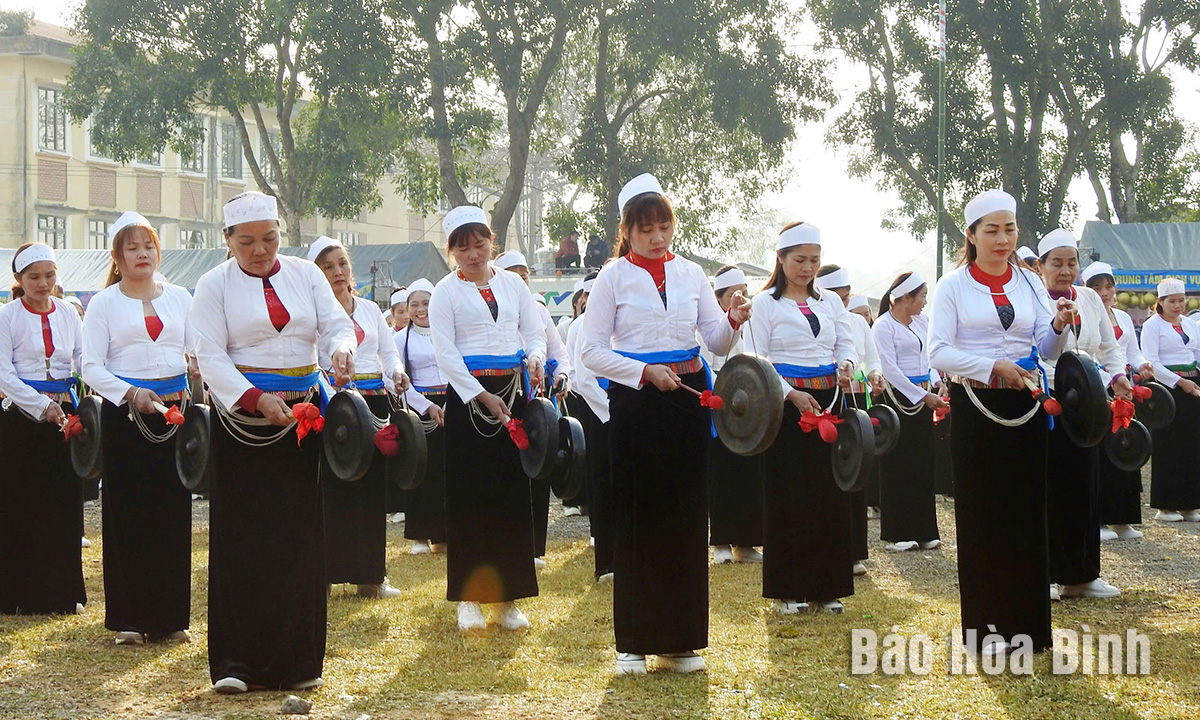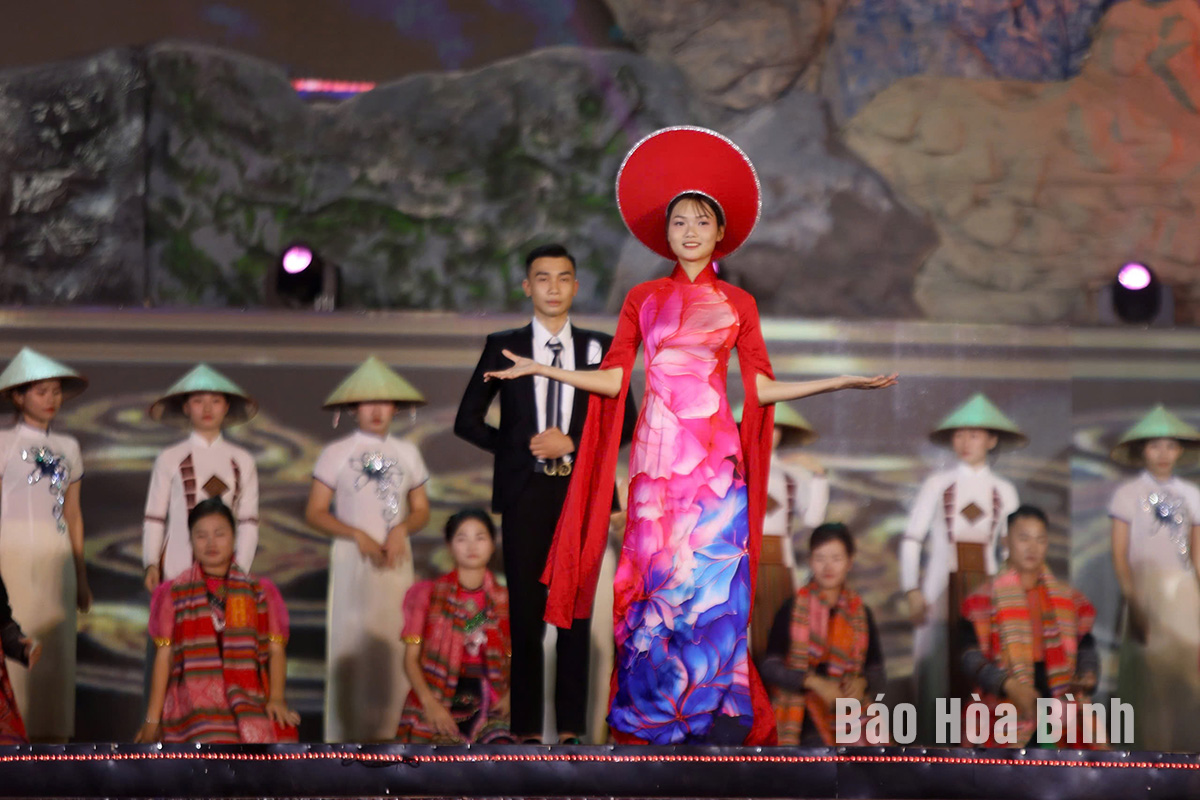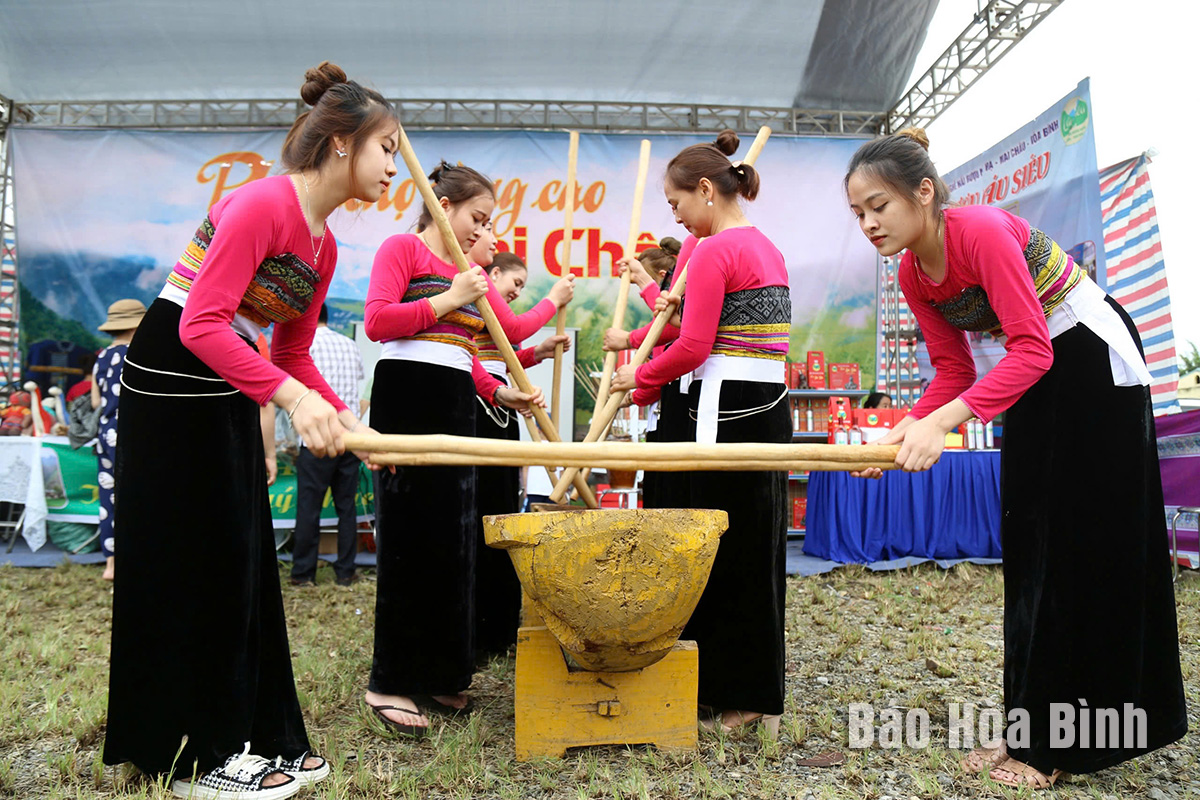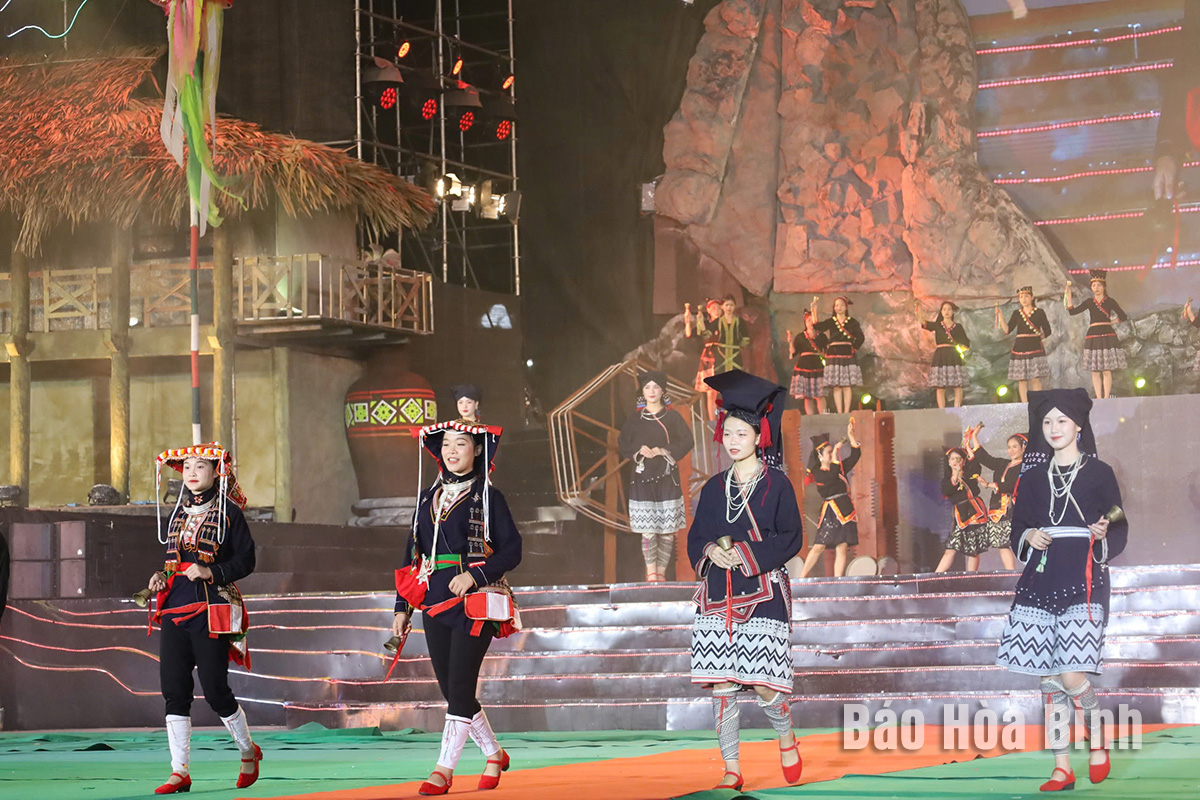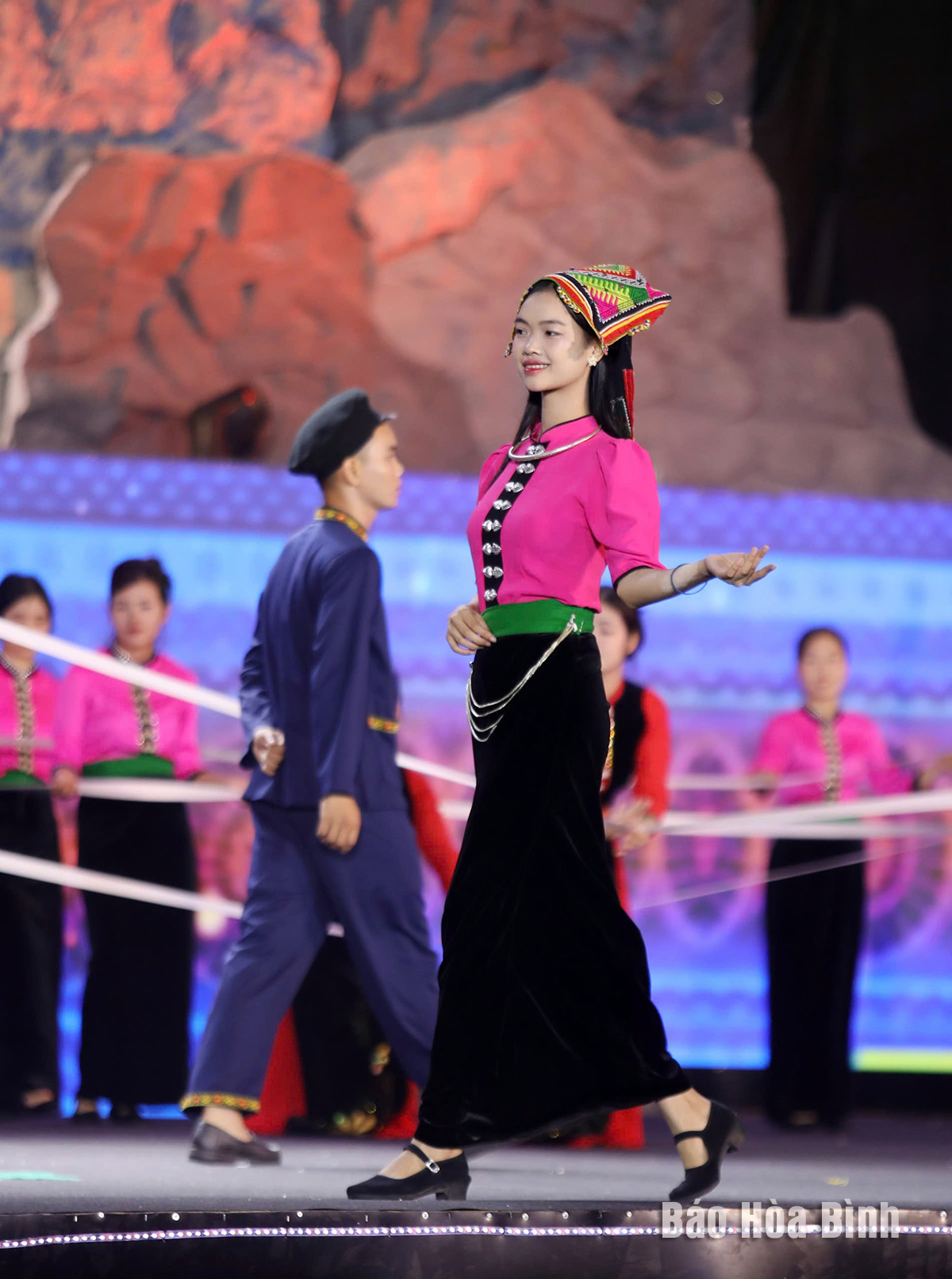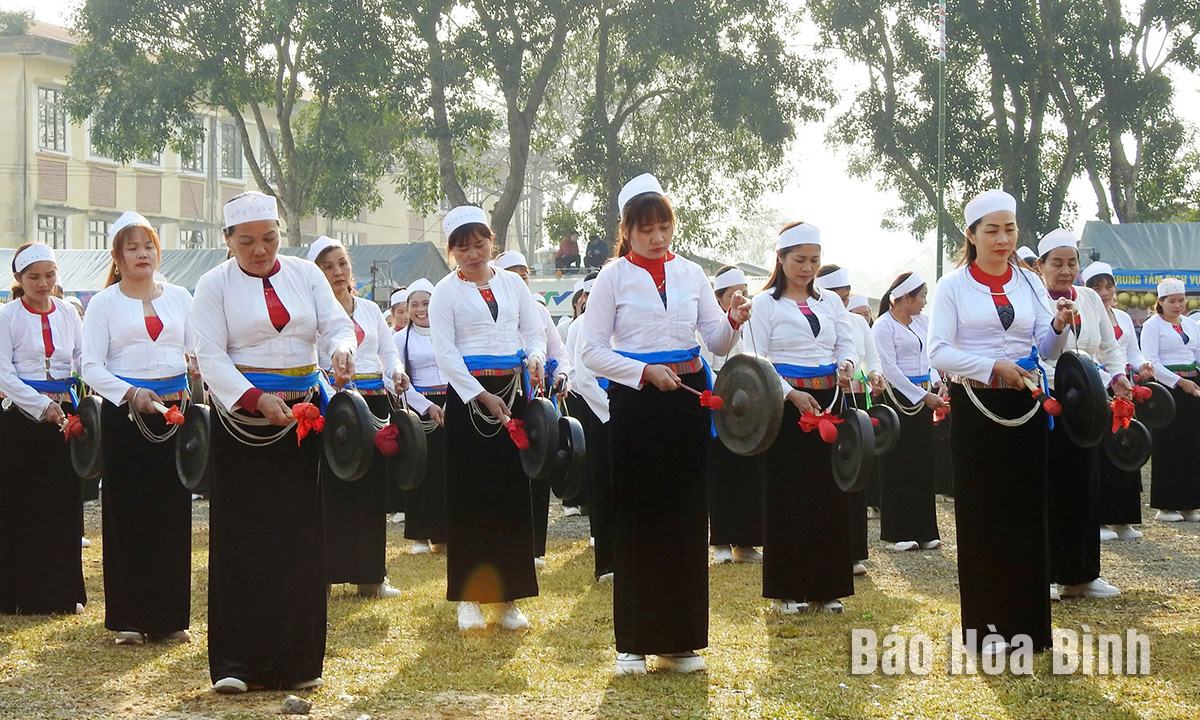
Hoa Binh leaves a strong impression on visitors due to the diversity in the lifestyle and cultural identities of its ethnic groups. The province is home to six main ethnic groups, with a total population of nearly 900,000. The largest group is Muong, making up 63.3% of the population, followed by Kinh with 27.73%, Thai 3.9%, Tay 2.7%, Dao 1.7%, Mong 0.52%, and other ethnic groups 1.18%. Along with the long history of the nation’s formation and defence, the province’s ethnic groups have always been united, hardworking, and determined to strive for socio-economic development. At the same time, each ethnic group displays its own unique and distinct cultural identity, contributing to a diverse, rich, and attractive cultural tapestry.
Hoa Binh was once known as Muong province. Currently, the Muong people make up
over 63.3% of the province’s population.
As the oldest
inhabitants of the land, the Muong people have lived in all localities of Hoa
Binh since ancient times. However, the population distribution is uneven, with
differences in the number, scale, and structure. Lowland areas, valleys, and
regions with many rice fields, especially the four fertile fields of Muong Bi,
Muong Vang, Muong Thang and Muong Dong, see the largest number of Muong
residents.
In economic activities, for generations, the Muong people have primarily lived
on agricultural production. The practice of rice cultivation has deeply
integrated into their beliefs. In cultural life, the Muong people have
preserved many traditional elements that reflect their ethnic identity. Many
artistic and cultural values, such as folk songs, gongs, ‘mo Muong’, and the
epic of land and water creation, are still preserved well. The Muong people
have always stood side by side with the nation in building and safeguarding the
country, while working together with other ethnic groups to build a green and
prosperous Hoa Binh.
Kinh ethnic group makes up nearly 28% of Hoa Binh’s population.
The Kinh people
arrived in Hoa Binh at different times, with two key periods being the second
half of the 18th century and the 1960s and 70s. Currently, this group accounts
for 27.73% of the province’s total population. Their production and living
conditions do not significantly differ from those of the Kinh people in the Red
River Delta. In cultural life, they have also maintained traditional Kinh
practices. They live throughout all localities, mainly in Hoa Binh city, and
Lac Thuy, Yen Thuy, and Luong Son districts. In recent years, as economic and
cultural exchanges have expanded, more Kinh people from other provinces and
cities have come to Hoa Binh to live and work.
Thai people preserve and promote the cultural values of the ‘Keng loong’ dance,
creating a unique impression in Mai Chau.
The Thai people account for nearly 4% of the local population. Of
these, over 96% live in Mai Chau district, and belong to the White Thai ethnic
group. The Thai people are primarily agricultural inhabitants. They are also
skilled in growing cotton, raising silkworms, weaving cloth, and making
brocades. The Thai people in Mai Chau continue to live in stilt houses and
maintain traditional cultural practices such as the ‘Xen muong’ festival and
‘Xoe’ dance. Many Thai hamlets are now focusing on community-based tourism
development such as Lac (Chieng Chau), Van and Poom Coong (Mai Chau town), and
Nhot (Na Phon).
Annual festivals offer opportunities to exchange and learn from ethnic groups’
cultural beauties. Photo: Dao women showcase their traditional costume during
the Hoa Binh Culture and Tourism Week in 2024.
The Tay people in Hoa Binh are mainly concentrated in Da Bac district.
According to statistics in 2009, the Tay ethnic group had over 23,000 people,
accounting for 2.94% of the province’s total population. In Da Bac, they make
up 41.33% of the district’s population, and 95.2% of the Tay population in the
province. They primarily live in mountainous areas, and mainly relying on
farming. They have developed their own unique methods in production,
particularly in exploiting narrow valleys and effectively managing water
resources. The Tay people practice ancestor worship. Most of their houses are
traditional wooden stilt houses, with thatched or palm leaf roofs.
Tay girl performs at a festival.
The Dao people (including Dao quan chet and Dao Tien) mainly live in Da Bac,
Kim Boi, Mai Chau, Cao Phong and Luong Son district, and Hoa Binh city.
According to statistics, they account for 1.7% of the total population. In the
past, they led a nomadic lifestyle. Today, thanks to the settlement policies of
the Party and the State, the Dao people's lives have become more stable and
progressively improved. They have preserved their unique cultural traits, such
as the ‘cap sac’ ritual, the ‘tet nhay’ festival, and ancient script within
their families and clans.
Mong people in Hang Kia and Pa Co communes in Mai Chau district reenact
their labour and community life during the Gau Tao Festival in 2025.
The Mong people mainly reside in Hang Kia and Pa Co communes of Mai Chau
district, with two local groups: Mong Den (Mongz Dul) and Mong Hoa (Mongz
Lenhx). They have preserved their cultural identity through their traditional
clothing, architectural styles, forging skills, language, the Tet festival, and
music, particularly the "khen" (panpipe) instrument. Their life was
once difficult, but thanks to policies of the Party and the State, the Mong
people have gradually embraced advancements in science and technology, with
many achieving college and university education. There have been significant
improvements in education and healthcare.
Along with the
aforementioned ethnic groups, Hoa Binh province is also home to other ethnic
minority groups such as Nung, Hoa, San Chay, San Diu, and Giay.
With an increasingly vibrant and widespread emulation movement aimed at building cultured residential areas and cultured families, Yen Thuy District has been making steady progress toward improving both the material and spiritual well-being of its people, while fostering a civilized, prosperous, beautiful, and progressive community.
Once lacking recreational spaces and community facilities, Residential Group 2 in Quynh Lam Ward (Hoa Binh City) has recently received attention for the construction of a new, spacious, and fully equipped cultural house. The project followed the model of state support combined with public contributions in both labor and funding.
The "All people unite to build cultural life" movement, which has been effectively integrated with Kim Boi district’s socio-economic development goals, is fostering a lively spirit of emulation across local residential areas, hamlets, villages, public agencies, and enterprises. In addition, through the initiative, traditional cultural values are being preserved and promoted, while community solidarity and mutual support in poverty reduction and economic development are being strengthened.
A working delegation of the Hoa Binh provincial People’s Committee led by its Permanent Vice Chairman Nguyen Van Toan on June 11 inspected the progress of a project to build the Mo Muong Cultural Heritage Conservation Space linked to tourism services in Hop Phong commune, Cao Phong district.
Born and growing in the heroic land of Muong Dong, Dinh Thi Kieu Dung, a resident in Bo town of Kim Boi district, in her childhood was nurtured by the sweet lullabies of her grandmother and mother. These melodies deeply imprinted on her soul, becoming an inseparable part of her love for her ethnic group's culture. For over 20 years, this love for her hometown has driven Dung to research, collect, and pass down the cultural values of the Muong people to future generations.
In the final days of May, the Ethnic Art Troupe of Hoa Binh Province organized performances to serve the people in remote, mountainous, and particularly disadvantaged areas within the province. These were not just ordinary artistic shows, but they were the meaningful journeys aimed at spreading cultural values, enhancing the spiritual life of the people and contributing to the preservation of ethnic minority cultural identities.



